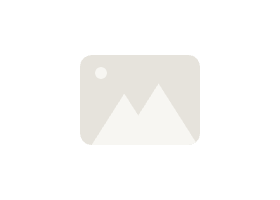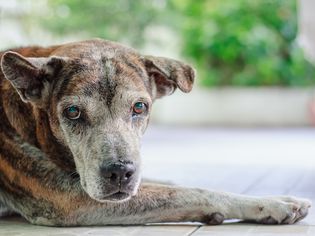Soft-Coated Wheaten Terrier: Dog Breed Characteristics & Care
The soft-coated wheaten terrier is a medium-size terrier dog breed from Ireland with a fun-loving, energetic, and bouncy personality. This dog sports a silky and wavy, medium-length coat in its trademark wheaten (gold) color. Puppies actually are usually born with a dark coat, which grows out to the wheaten color as the dog matures. The coat doesn’t shed much and instead continuously grows and must be trimmed.
Overall, the wheaten has a square, muscular build. This canine was bred to be a hard-working farm dog as well as a cuddly companion.
Learn all about the soft-coated wheaten terrier, including their history, care needs, and more.
Breed Characteristics
Group: Terrier
Height: 17 to 18 inches (females); 18 to 19 inches (males)
Weight: 30 to 35 pounds (females); 35 to 40 pounds (males)
Coat: Wavy, silky, medium-length
Coat Color: Wheaten
Life Span: 12 to 14 years
Temperament: Friendly, lively, affectionate
Hypoallergenic: Yes
Origin: Ireland
Characteristics of the Soft-Coated Wheaten Terrier
Soft-coated wheaten terriers tend to have an upbeat, extroverted temperament. They’re known for bouncing and giving kisses, and are typically loving with and devoted to their humans. They are moderately wary when it comes to strangers.
A bubbly, high energy level also shapes the wheaten’s personality. Although they can be good family dogs, they might not be best for the elderly or very small children, even though they’re well-behaved around kids with proper training and socialization.
These dogs don’t like to be left home alone for long, so they aren’t ideal for those who are at work all day. When alone and bored, they can exhibit unwanted behaviors like destructiveness and barking.
Thanks to their history as farm dogs, soft-coated wheaten terriers may also bark at new sights and sounds, and that’s something to consider if you live close to your neighbors.
These dogs have high grooming needs, so you need to be prepared to handle those needs regularly. Budget for grooming visits, and brush the coat daily.
| Affection Level | High |
| Friendliness | Medium |
| Kid-Friendly | High |
| Pet-Friendly | Medium |
| Exercise Needs | High |
| Playfulness | Medium |
| Energy Level | High |
| Trainability | Medium |
| Intelligence | Medium |
| Tendency to Bark | Medium |
| Amount of Shedding | Low |
History of the Soft-Coated Wheaten Terrier
The soft-coated wheaten terrier originated in Ireland roughly 200 years ago. They come from the same ancestor as the Kerry blue and Irish terriers. A ll three terriers were bred to be all-purpose farm dogs.
They could herd livestock, protect property, and even exterminate rodents. Plus, they were lovable companions to their families. Today’s wheatens still have that prey drive, as well as a protective streak when it comes to their family and property.
The Irish Kennel Club first recognized the breed in 1937. And wheatens made their way to the United States in the 1940s. The American Kennel Club didn’t recognize the breed until 1973.
Soft-Coated Wheaten Terrier Care
Soft-coated wheaten terriers need plenty of exercise each day, and they tend to remain energetic well into their old age. Their coat does require quite a bit of upkeep. And they need early and consistent training and socialization.
Exercise
Plan at least one to two hours of daily exercise for a wheaten. These dogs prefer to be active with their humans rather than being left to their own devices. Examples of fun activities include:
- Walks
- Jogging
- Hikes
- Fetch
- Dog sports, such as agility and herding
When outdoors, keep wheatens either on a leash or in a securely fenced area—the fence should be tall enough to prevent the dog from jumping over it. Both their herding instinct and their prey drive can make them want to chase moving objects, including cars and small animals like squirrels and cats. And they might ignore your attempts to call them back.
Grooming
The wheaten’s coat doesn’t shed very much, so this dog can be a good option for those with allergies. However, the coat is shaggy and picks up a lot of debris and dirt when outside, as well as food and water when eating and drinking. Keeping it trimmed can be helpful in maintaining a clean dog and clean home.
The coat also requires daily brushing, as it tends to mat easily. Use a pin or slicker brush to remove any loose hair and dirt. Follow that with a comb to make sure to get out all the tangles.
Plan on a bath at least every month, depending on how dirty your dog gets. And trim the coat roughly every four to six weeks, paying special attention to the hair around the eyes and the beard to keep them neat.
Look for tear stains in the corners of the eyes, and clean them gently with an appropriate cleaner. Check your dog’s nails every month to see whether they’re due for a trim. And try to brush your dog’s teeth teeth daily. Also examine and clean their ears regularly to be sure they haven’t developed problems like infections.
Training
Wheatens are smart, but they also can be stubborn and strong-willed. Aim to start training and socialization when your dog is a puppy to prevent bad habits from forming.
Always use positive-reinforcement methods, and try to make training sessions fun. Be consistent and firm in your commands but avoid harsh corrections, as they can cause this sensitive breed to shut down and refuse to learn.
Providing positive experiences with new people and dogs from an early age can help to make the wheaten more comfortable around strangers. Puppy obedience classes are excellent to instill both basic commands and good manners.
Soft-coated wheaten terriers may be aggressive toward other dogs of the same sex, but training can help with this. Also, they can usually get along with other family pets, especially when raised in the same household.
Common Health Problems
The soft-coated wheaten terrier is overall a healthy breed. But it is prone to some hereditary health issues, including:
- Protein-losing nephropathy: This is a kidney disease that causes protein to be lost through urine, leaving less protein in the blood. Symptoms include increased urination and increased thirst, as well as edema.
- Protein-losing enteropathy: This is a GI condition in which the body loses protein through the gastrointestinal system. Symptoms include vomiting, diarrhea, weight loss, and edema.
- Addison's disease: This causes the adrenal glands to not produce enough hormones to maintain balanced electrolytes. It’s also known as hypoadrenocorticism.
- Renal dysplasia: This is a congenital, hereditary condition that causes malformed nephrons in one or both kidneys. Symptoms include stunted growth, increase thirst, and increased urination.
Diet and Nutrition
Always have fresh water accessible for your dog. And feed a high-quality canine diet that’s nutritionally balanced. It’s typical to feed two measured meals per day. Discuss the quantity and type of food with your vet to ensure that you’re meeting your dog’s individual needs. Moreover, make sure not to overfeed treats and other extra food to help prevent your dog from becoming overweight.
Where to Adopt or Buy a Soft-Coated Wheaten Terrier
The soft-coated wheaten terrier is a moderately popular dog breed. For a puppy from a reputable breeder, expect to pay between $800 and $2,000 on average.
It is possible to find one at an animal shelter or rescue group, though it might take some time. See whether you can get your name on a breed wait list if possible.
For further information to help connect you with a wheaten, check out:
- S'Wheat Rescues and Adoptions
- Soft Coated Wheaten Terrier Club of America
Soft-Coated Wheaten Terrier Overview
The soft-coated wheaten terrier can make a fun and affectionate companion, but you need to be prepared to properly train and socialize them. Also, they are higher maintenance when it comes to grooming, and they don’t like being alone.
Pros of Soft-Coated Wheaten Terriers
- Loving and devoted
- Low shedder
- Often good with children
Cons of Soft-Coated Wheaten Terriers
- Can be stubborn about training
- High grooming needs
- Can't tolerate hot weather well
More Dog Breeds and Further Research
Always do your homework when determining whether a dog breed is right for your lifestyle. Talk to soft-coated wheaten terrier owners, rescue groups, reputable breeders, and veterinary professionals. Try to spend some time around wheatens as well.
If you’re interested in similar breeds, check out:
- Kerry Blue Terrier
- Irish Terrier
- Glen of Imaal Terrier
There’s a whole world of potential dog breeds out there—with a little research, you can find the right one to bring home!
- Are soft-coated wheaten terriers good family dogs?
Well-trained and socialized wheatens generally are good around children. However, dogs should always be supervised around young kids.
Are soft-coated wheaten terriers aggressive?Soft-coated wheaten terriers can be moderately protective, barking at perceived threats. But as long as they have proper training and socialization, that rarely turns into aggression.
Do soft-coated wheaten terriers bark a lot?Soft-coated wheaten terriers can bark a lot when they are left alone for too long or when they want to alert you to something. Training to reduce excessive barking can be useful for this breed.
Are soft-coated wheaten terriers cuddly?Yes, soft-coated wheaten terriers can be cuddly and affectionate.
RECOMMENDED NEWS

How to Care for a Blind Dog
Blindness occurs in many species including dogs. Some dogs are born blind while others de...

How Often Should I Deworm My Dog?
How often you should deworm a dog depends on their age and whether or not they have worms...

The Surprising Truth About Poinsettias: Are They Harmful to Your Dog?
‘Tis the season for glittery decorations, scrumptious foods, and beautiful blooms. With...

How to Identify and Treat Incontinence in Senior Dogs
Older dogs of both sexes can struggle with incontinence, which is the inability to contro...

Glen of Imaal Terrier: Dog Breed Characteristics & Care
The Glen of Imaal terrier is a medium-size terrier dog breed from Ireland with a medium-l...

Appenzeller Sennenhund: Dog Breed Characteristics & Care
The Appenzeller Sennenhund is a medium-size herding dog breed from Switzerland with a sho...






Comments on "Soft-Coated Wheaten Terrier: Dog Breed Characteristics & Care" :